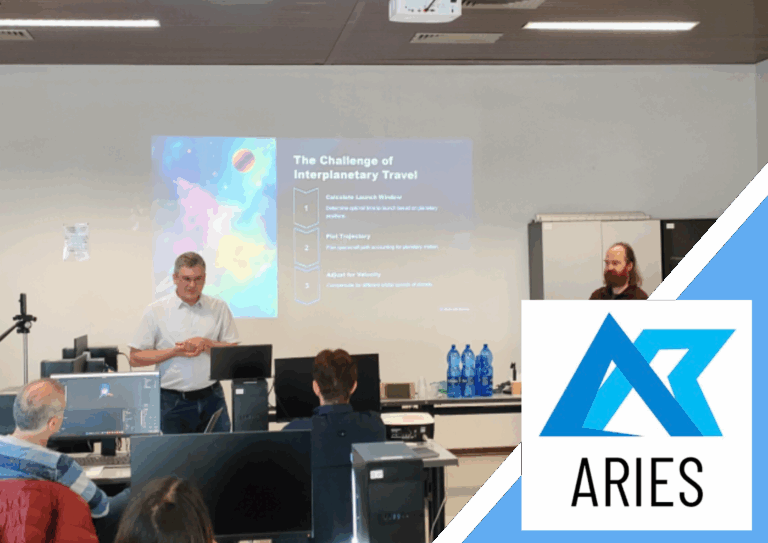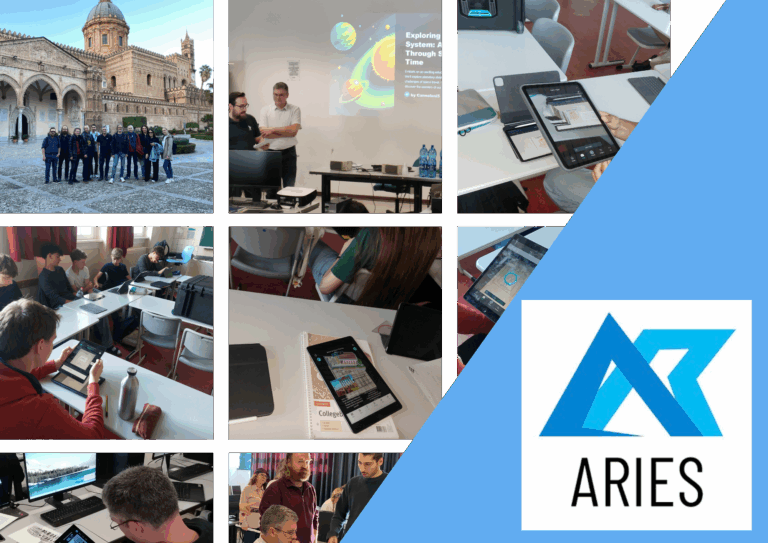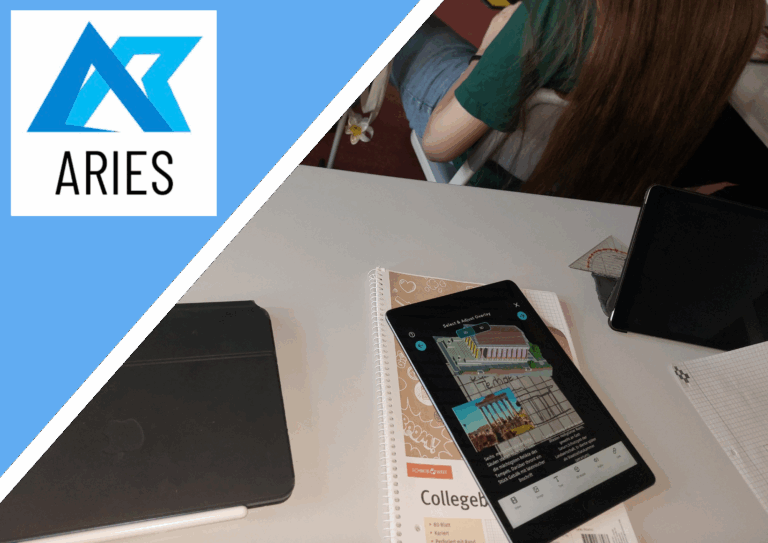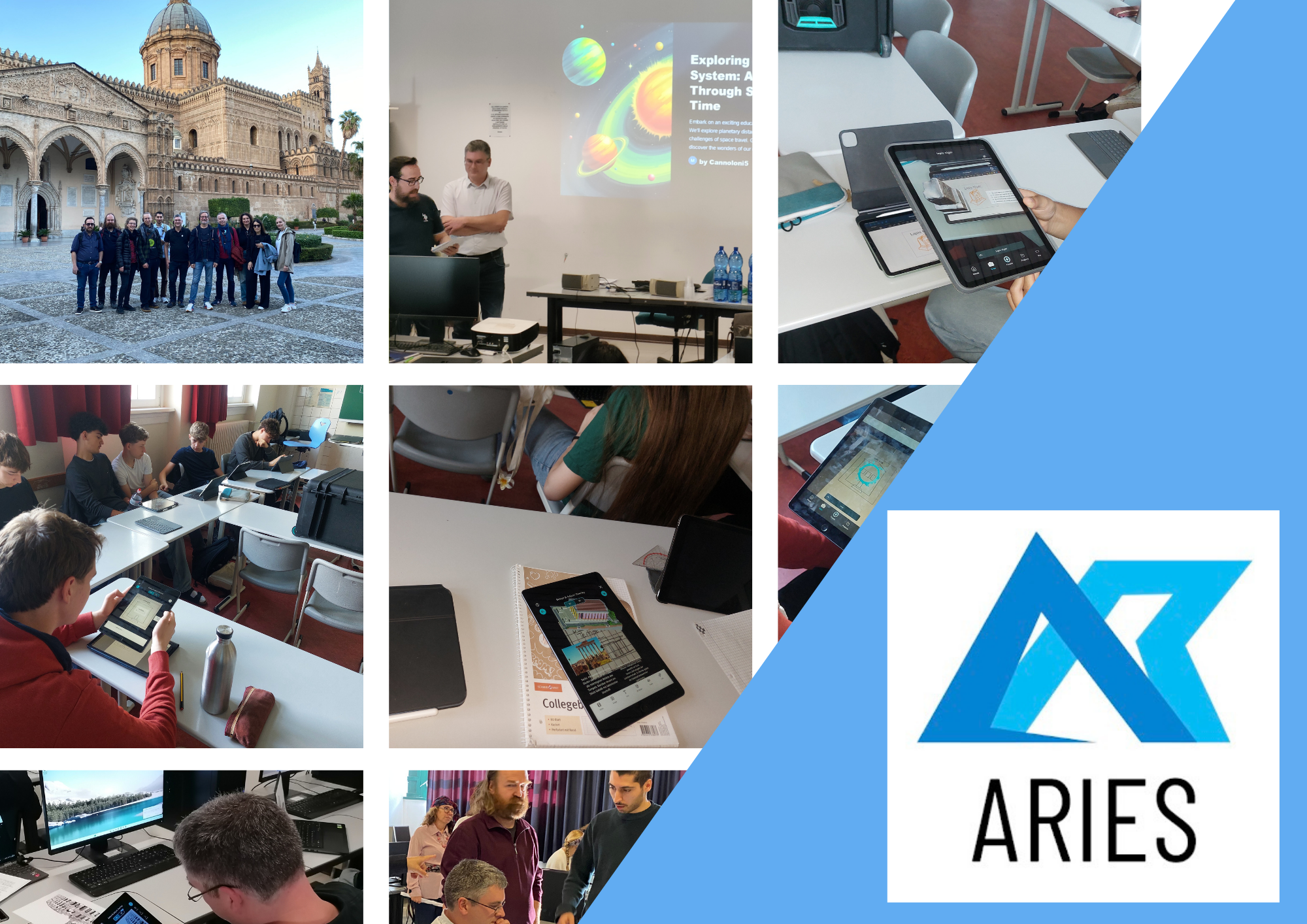From ancient stones to expanded stories
take a digital journey through the Roman Forum
How can an ancient city be brought back to life in the classroom? For a Latin class in Göttingen, the answer was clear: transform the Roman Forum into a multimedia treasure hunt using augmented reality (AR). As part of the ARIES project, the students turned their textbooks into 3D adventures, combining historical research, creative storytelling, and digital design to create an unforgettable experience.
Under the guidance of their teacher, Mr Deters, the pupils at Hainberg Gymnasium began creating AR models of significant Roman landmarks, such as the Arch of Titus. Using tools such as Adobe Aero and Sketchfab, they explored architectural details, discussed cultural significance, and learnt how public monuments were used to represent imperial power. What followed was not just a lesson, but a veritable ‘digital excavation’.
Each student selected a monument from the Roman Forum, researched it, and then created an interactive AR scene linked to GPS triggers or QR codes. These mini-experiences were then tested on site during a class trip to Rome.



The result? Mixed reality – in the truest sense of the word.
Not everything went according to plan, however. The GPS signals were irregular. The sun made the screens difficult to read. And, of course, the mobile data connection in the Roman Forum is far from ideal. Despite these challenges, however, the students were enthusiastic.
Their reflections showed that the experience was about more than just technical problems. They recognised how AR can transform dry facts into emotional stories. They collaborated, created something new, and developed digital literacy, historical thinking, and creative communication skills. Even the teacher admitted, ‘It wasn’t perfect, but it was impressive.’
The result? Mixed reality – in the truest sense of the word.
Not everything went according to plan, however. The GPS signals were irregular. The sun made the screens difficult to read. And, of course, the mobile data connection in the Roman Forum is far from ideal. Despite these challenges, however, the students were enthusiastic.
Their reflections showed that the experience was about more than just technical problems. They recognised how AR can transform dry facts into emotional stories. They collaborated, created something new, and developed digital literacy, historical thinking, and creative communication skills. Even the teacher admitted, ‘It wasn’t perfect, but it was impressive.’
What’s next?
The project will not end here. Inspired by the students’ response, the teacher plans to refine the multimedia rally further, especially in the weeks before the summer holidays when motivation tends to wane and project work is ideal. The AR tools will remain in the classroom toolbox, ready to transform future lessons into immersive experiences.
This pilot phase highlights the essence of ARIES: empowering educators and learners to explore the intersection of education, creativity, and immersive technology.
“Even though the result wasn’t perfect, the engagement and learning processes were a complete success for both students and teachers.”
Many thanks to Mr Deters and his Latin class!

